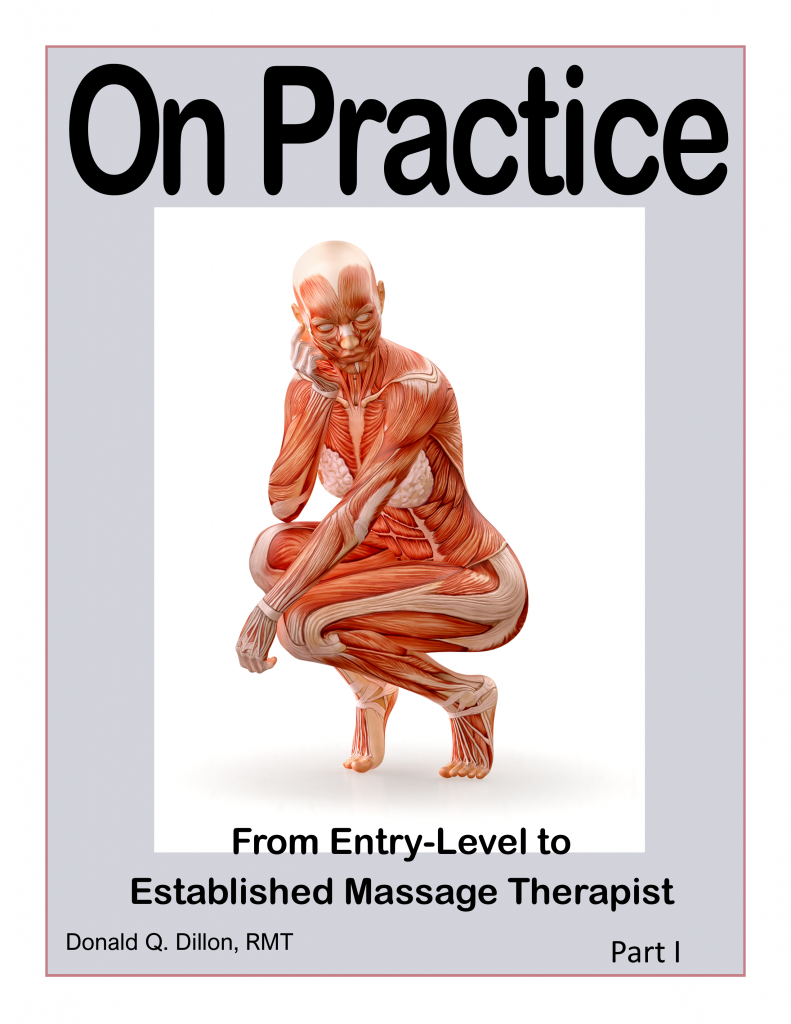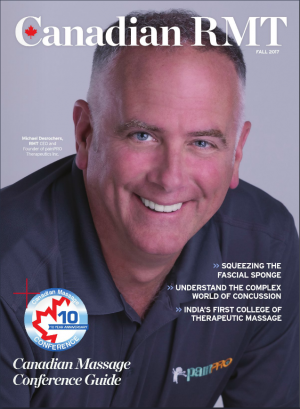Open Letter to the RMTAO Board of Directors,
and Executive Director re: strategic planning 2021
Thank you for your dedicated service to our professional representative, the RMTAO. As an RMT practicing in Ontario, I acknowledge this has been a turbulent year, and commend your courage in taking the leadership seat as we collectively reflect on the past, assign meaning to the present and look towards the future.
According to the RMTAO website[i], the role of the RMTAO Board, “to envision the future of the organization and the profession while ensuring the organizational structure is present for the vision to be achieved. The Board of Directors provide overall strategic direction for the Association and monitor the organization’s performance towards achieving these strategic goals. The Board is also responsible for setting governing policies for the organization and establishing position statements on matters of importance impacting the profession.”
As such, I ask for both consultation and representation on the following points as you deliberate strategic planning this year. I request and expect opportunities to assemble with other RMTs, to consult the Board transparently and vigorously, to engage and exchange experience and perspective on these salient issues in an inclusive, supportive and coherent forum. To deny such a vigorous exchange would forfeit trust, respect and loyalty I have for my professional representative.
These points will be shared through the available social media channels and other mechanisms, to allow RMTs across Ontario to endorse this action. Over this year, I ask the RMTAO to conduct town hall meetings, utilize Community Based Networks (CBNs) for two-way exchanges with the Board and Executive Director, and to make available other forums to facilitate interaction among all Ontario RMTs, so we can believe we have been consulted and duly represented.
Following are the 12 areas I believe require the most urgent redress:
Nurture Insurer Relations. Relationships with insurers are essential to RMTs. Many patients rely on health benefits for Musculo-skeletal injuries not reimbursed under the provincial health plan. Respectful, beneficial ongoing discussions with insurers are critical to massage therapists. Insurers are signalling changes in coverage for massage therapy (MT) services, and the profession seems ill-prepared to respond. Specifically:
Insurers acknowledge MT provides short-term pain relief. They want comparative studies to demonstrate efficacy as compared to exercise, a yoga class, mindfulness practice or “a nap”.
Insurers are skeptical of a broad scope of practice not linked directly to evidence or measured outcomes. They want treatment guidelines that estimate costs of treatment plans and deliver tangible benefits to claimants.
Insurers demand services claimed to be evidence-based and demonstrate efficacy.
Insurers imply claims reimbursement can contribute to exploitive business models geared to maximizing financial gain rather than better health outcomes. They want measures taken against fraud and exploitation.
My question for Operations: What, specifically, are the action steps the RMTAO will take to improve relationships with insurers?
Bolster RMT Earnings. Many RMTs complain their incomes are insufficient, and they fear risk of overuse injury. Delivery of care models are time and labour intensive, RMTs regularly lack business acumen, the coherent relationship of employer/employee versus contractor/practice broker has, from the beginning been muddled…all factors affecting the lucrativeness of practice.
The Profession of Massage Therapy in Canada, An Environmental Scan (CMTA 2016) laid out RMT annual earnings: 20% <$25 K, 23% $25-39 K, 18% $40 – 55 K, 12% $55-69 K, 11% $70 K+.
From the most recent RMTAO earnings survey (2013):
Average income hands-on/direct care $39,163.
Most respondents do not have secondary sources of income.
Average service fee $76.00/hour.
21 hours/week ‘hands-on’, Average volume of patients – 19.3/week.
9.5 hours/week dedicated to business activities.
50%+ respondents would choose to work 10 additional hours, but suffer or worry for physical strain, lack clients, or “fear burnout.”
54% are satisfied with pay – but would work more if not for the aforementioned
From the same survey, “56% not earning what they expected…because of market saturation, inconsistent pay, lack of public understanding (re: MT scope/profession).…told earlier / during training they would be making much more than they do.…MVA insurance and HST taxes have negatively impacted finances.”
Massage Therapists who broker practice opportunities for other RMTs, who take on large leases, risk capital, business interruption and loss, who work diligently in their communities to build credibility and awareness of the profession, provide an essential service to all of us. They particularly require support and encouragement.
My question for Operations: How will the RMTAO work with members to improve the viability and lucrativeness of practice?
Support RMT Scholars and Research Literacy. Highly educated RMTs have trouble advancing in their field for lack of research and leadership positions, resulting in a tremendous loss of perspective and intellectual capital within our profession.
From a Massage Therapy Canada article entitled Preventing Brain Drain: Opportunities and Challenges for Higher Education, “Trish Dryden confirms the self-employed status of RMTs may limit their proclivity toward an administrative or academic position. When RMTs do obtain these positions, they are full-time, with few resources allotted to do research. This speaks to a much larger social question around access to the production and distribution of knowledge,’ states Dryden.”[ii]
It is difficult to discern the level of research literacy of RMTs in Ontario, although a study was undertaken in Saskatchewan in 2008.[iii] It is expected that research literacy and generation will improve the credibility, status and possible funding of massage therapy services in the health care sector. The RMTAO could improve research literacy of its members via improving access to research abstracts, consulting research thought-leaders in the field to define and lay out the research agenda, liaison with universities interested in conducting research in massage therapy, and supporting the generation of research.
My question for the Board and Operations: What is the comprehensive plan for funding and supporting massage therapy research, and improving research literacy and capacity for RMTs? What will the RMTAO do to support RMTs seeking higher education and research positions in the field?
Address Inequities in Access to Care. According to the 2019 CMTO Annual Report, almost 4/5 (78%) of the RMT population in Ontario are women. While not tracked, we can speculate current massage therapy patient populations are likely not representative of the diversity in gender, socio-economic status and ethnicity of the general Ontario citizen population.
My question for the Board and Operations: How will the RMTAO promote massage therapy to a broader and diverse patient population, and support the concerns and interests of its largely female member population?
Produce Promotional Practice Materials. I need help educating the public on massage therapy. I would like to access a wide variety of media – stock photos, illustrations, short animations, and videos. The infographics provided by the RMTAO are a good start, and I believe many RMTs would be happy to pay for effective patient education media. The RMTAO could off-set costs by designing images and materials centrally, making them available to all members at a reasonable cost. The Canadian Massage Therapist Alliance (CMTA) could procure such media to be used across the nation, improving coherence of the profession’s promotional messaging and further reducing costs to acquire such media. Look to British Columbia and Manitoba’s MT association for good examples of public awareness campaigns. Perhaps RMTAO members could be approached to crowdfund public advertising campaigns.
My question for Operations: Will the RMTAO produce a variety of effective media to help members educate the public at the front-line of practice?
Capture and Share Statistics on the Profession. Our profession suffers from a paucity of information on itself. As noted, the last RMTAO earnings survey was eight years ago, the last comprehensive survey by the Ontario regulator was 18 years ago. Information on the profession is required by prospective individuals considering massage therapy vocationally, and by existing practitioners measuring their results against peers:
Range of net incomes RMTs realize (annual survey)
Sectors/populations served, and common conditions/complaints addressed
Perception by MTs of greatest barriers to practice, and best opportunities
Forecasting 5-to-10 years-out critical practice issues
The first wave of the COVID pandemic in Spring 2020 presented a tremendous opportunity to engage RMTs while they were literally sitting on their hands, awaiting for return-to-work restrictions to abate. As White House Chief of Staff Rahm Emanuel said, “You never want a serious crisis to go to waste.” We could have used this time to hold virtual townhall meetings and symposia to address salient issues in the profession – facilitating member engagement and soliciting their perspectives and ideas – to finally tackle the critical issues that divide us. The RMTAO fell short here.
Currently, the RMTAO social media page for member engagement has been archived, local hubs (CBNs) have been left largely unsupported, and the Board has not engaged the membership on the mission-critical Ends policy for some time.
It appears, frankly, the RMTAO goes out of its way not to engage its membership.
My question for Operations and The Board: Will the RMTAO engage its members regularly so RMTAO members (and prospective RMTs) can participate in the direction of the profession, accumulate accurate and helpful metrics on the profession, and be more informed in their individual practice operations and decisions?
Follow up question: The regulator last performed a comprehensive survey of the profession in 2003. RMTAO members and prospective practitioners require current profession statistics to make good practice decisions. Will the RMTAO lobby the regulator to commit resources for a new comprehensive survey?
Recruit and Train Media Representatives. RMTs have suffered increasingly poor media coverage. Searching several national media sites, news articles featuring the words “massage” or “massage therapist” are regrettably underweight in citing benefits of care, research developments or community health/populations served. Most searches produce stories linked to insurance fraud, the sex trade and professional misconduct / sexual abuse. Through imbalanced journalism and resultant influence on public perception, we might collectively be concerned RMTs are disproportionately vulnerable to complaints.
I argue the RMTAO is underutilizing the skills and resourcefulness of thought leaders, and front-line practitioners in its Community Based Networks. Trained media representatives at the local level could proactively submit informative, positive press releases to help guide public perception of massage therapists.
My question for Operations: Will the RMTAO recruit and train a team of members – as well as the Executive Director! – to consistently and competently respond locally or provincially to imbalanced and negative media coverage?
Strengthen Advocacy, Demonstrate Leadership. Massage therapy, although a regulated health profession in Ontario, is excluded from provincial health insurance imbursement and subject to the consumption tax (HST). Compared to smaller, perhaps considered more “alternative” professions (chiropractic, naturopathy, Chinese Medicine/acupuncture) the MT profession appears fragmented, under-resourced and unfocused in its activism.
Astonishingly, despite the formation of the Federation of Massage Therapy Regulatory Authorities of Canada (FOMTRAC) in 2003, and diligent work by several MT associations across Canada, progress on regulation has been exceedingly slow. The Ontario regulator now commands a budget greater than 12 times that of our Ontario representative…a concerning and unsustainable imbalance of resources and power.
Momentum has been lost from the RMTAO’s 2018 government relations exercise, and the privilege of self-regulation is being critically examined in British Columbia, with implications for Ontario. The RMTAO needs to do better in portraying leadership qualities, and advocating for the interests of its members.
My question for Operations: Will the RMTAO demonstrate better leadership, focus its advocacy efforts, and regularly report to the membership the purpose and outcomes of those efforts?
Position Massage Therapists in Health Care. Massage therapists are not being employed in community and public health – arguably more strategic targets for inclusion than hospital or emergency medicine. Beyond the absence of a clear lobbying strategy, the profession lacks infrastructure for generating research and affecting public policy. There are other disciplines with the same objectives as ours, and the massage therapy profession would benefit from alliances with like-minded professions to pool resources and focus lobbying efforts for inclusion in public health.
My question for Operations: Considering disciplines aligned with MT objectives in pursuing government and insurer relations, public and media relations, and research funding/generation, what steps will the RMTAO take towards building these strategic relationships?
Support Prospective and Entry-Level Practitioners. Training college accreditation helps ensure a standard quality of education, and contributes to the profession’s credibility in the public eye. The Canadian Massage Therapy Council for Accreditation reports the process stalled in all but 4 provinces – BC resigned but re-enlisted.
American schools are seeing a precipitous drop in enrollment and anecdotally in Canada the supply of massage therapists is not meeting demand by employers. Stakeholders in the profession – representative associations, regulatory bodies, training schools – appear uninterested to attract prospective candidates to the field upstream.
My question for the Board: What steps will the RMTAO take to promote the profession, and attract the next generation of massage therapists to the profession? What specifically will the RMTAO do to support entry-level practitioners to become better informed and prepared as they enter the profession?
Follow up question: Does the RMTAO have a functional relationship with the Canadian Council of Massage Therapy Schools[iv] (CCMTS) and the Heads of Massage Therapy Programs in Community Colleges? If so, what is the scope and extent of the relationship? What joint projects are these decision-makers working on?
National Coordination and Representation. The Canadian Massage Therapist Alliance (CMTA) states its objectives are to advance the MT profession, collaborate with industry partners, and encourage regulation[v]. This coalition of the sister provincial associations is funded by membership dollars. The CMTA does not provide an annual report on its site, and appears ineffective in coordinating a national strategy for government and insurer relations, gatekeeper HCP relations and public/media relations. It falls short of contributing to research literacy in the profession or facilitating national media to inform all representative associations. The website appears to be infrequently updated.
The CMTA could be much better coordinated and focused on common national issues, while the sister associations support each other addressing province-level challenges.
My question for the Board: What is necessary to improve the function and coordination of the CMTA, to the benefit of all sister associations? How will the RMTAO nudge the CMTA to meet these objectives?
Engagement Leading to Evolution. There are many extrinsic forces affecting the practices of massage therapists, now and into the future. RMTs must consider how technology, health care delivery, digital knowledge transfer, government policy, socio-economic shifts, the specific needs of marginalized populations, and other factors affect day-to-day practice. Our profession requires think-tanks and opportunity to consult subject matter experts to forecast and prepare for these issues.
Additionally, there are a myriad of substantive issues within the profession that suffer an inchoate conceptual framework, and thus remain unresolved. Two examples: 1) the confusion around what defines the employee/employee or contractor/practice broker relationship from a legal, taxation, functional and economically-viable-for-both-parties viewpoint 2) the dialectic assertion that “relaxation” as a therapeutic outcome is diametrically opposed with the credibility the profession seeks.
Such issues require long but necessary hours of thoughtful and respectful engagement, ultimately fruitful to the profession in its coherent messaging to government, insurers, gatekeeper HCPs and the public / media. Symposia, think-tanks, round table discussions, and facilitated social media platforms are all vehicles for development and maturation of the professional context and theoretical framework.
My question for the Board: Will the RMTAO create multiple opportunities for RMTs to contribute, to dialogue and debate, and ultimately influence the narrative of their chosen vocation?
I the undersigned respectfully demand both consultation and representation on the 12 points included therein, as the RMTAO Board deliberates strategic planning this year.
I request and expect opportunities to assemble with other RMTs, to consult the Board transparently and vigorously, to engage and exchange experience and perspective on these salient issues in an inclusive, supportive, and coherent forum.
Name (print) Signature
Date Signed
[i] https://www.rmtao.com/about-rmtao/our-board
[ii] https://www.massagetherapycanada.com/preventing-brain-drain-4009/
[iii] Research utilization and evidence-based practice among Saskatchewan massage therapists (degruyter.com)
[iv] http://www.ccmts.ca/member_schools.html
[v] http://www.crmta.ca/?page=9




